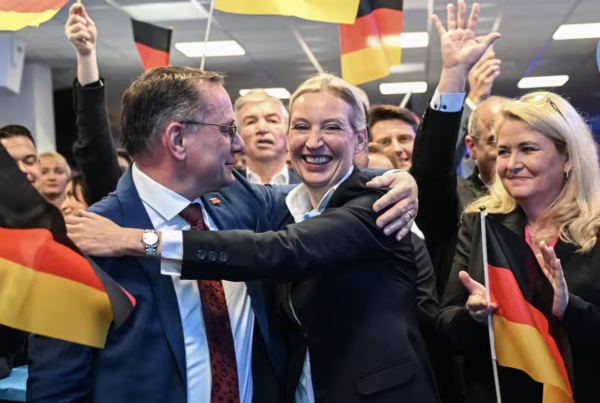By Abigail Edwards
“We cannot be afraid to call the actions of the Burmese authorities what they appear to be: a brutal, sustained campaign to cleanse the country of an ethnic minority,” — Nikki Haley, American ambassador to the United Nations.
Well Ms. Haley, there is a word for that: genocide.
The Rohingya are an ethnic minority Muslim group largely concentrated in Rakhine State, a strip of land on the western coast of Myanmar bordering Bangladesh, separated from the rest of the country by mountains. Despite the Rohingya having ties to the land that precedes the Burmese invasion in 1784-85, they are considered by the government to be illegal immigrants from Bangladesh, referred to as “Bengali”, and stripped of all citizenship rights, including the right to vote.
Although the Rohingya have been persecuted in Myanmar for decades, the current crisis began on August 25th when Harakah al-Yaqin (ARSA), a radical Rohingya militant group, attacked Myanmar’s security forces. Since then, the military, which largely controls the government through their guaranteed authority to veto constitutional changes in parliament and yield absolute power over the country’s defense force, has systematically pushed the Rohingya population out of the Rakhine state and into Bangladesh, burning villages, raping, and executing Rohingya along the way.
Defined by the 1948 Convention on the Prevention and Punishment of the Crime of Genocide, genocide includes “any of the following acts committed with the intent to destroy, in whole or in part, a national, ethnical, racial or religious group, as such: (a) Killing members of the group; (b) Causing serious bodily or mental harm to members of the group; (c) deliberately inflicting on the group conditions of life calculated to bring about its physical destruction in whole or in part; (d) imposing measures intended to prevent births within the group; (e) forcibly transferring children of the group to another group.”
With the Rohingya crisis it is almost too easy to go down the list:
a) “Killing members of the group” — Myanmar’s military is using what could be called a scorched earth strategy in an attempt to push the Rohingya into Bangladesh. A statement from Bangladesh authorities given on October 6th estimated that at least 3,000 people have been killed since the clearances began on August 25. Many witnesses have reported that the military is burning entire villages and holding random and targeted executions, while many more are being killed through explosions, fire, and stray bullets.
“You do not belong here – go to Bangladesh. If you do not leave, we will torch your houses and kill you.”
b) “Causing serious bodily or mental harm to members of the group” — This clause proves that the persecution of the Rohingya would classify as genocide, even if the death toll itself was zero, due to the following developments: mass deportations of upwards of 500,000 Rohingya forced by the military out of Rakhine state and into Bangladesh. Few make it to the end of this dangerous journey, which is scattered with landmines and the constant threat, and common occurrence, of rape and murder. Although the Convention provides no empirical definition of “bodily and mental harm”, this description surely would qualify.
c) “Deliberately inflicting on the group conditions of life calculated to bring about its physical destruction in whole or in part” — the scorching of Rohingya villages on its own, if not the deportations described above, serves as fulfillment of this criteria. Furthermore, the UN report on the crisis qualifies the attacks as intended to “instil deep and widespread fear and trauma — physical, emotional and psychological.”
d) “Imposing measures intended to prevent births within the group” — Under the government of the Rakhine state, the Rohingya are limited to two children, a policy that does not apply to the Buddhists in the area.
While (d) by itself would likely not be considered genocide, and there being no real evidence of (e), it is important to remember that only one of these qualifications needs to be fulfilled for a situation to be considered a genocide; there is strong evidence for at least three.
It is also important to note that the largest difficulties in defining a situation as a genocide come out of the somewhat ambiguous wording of the Convention’s definition. An odd facet of the Genocide Convention, and easily a flaw, is the lack of inclusion of political groups. By excluding political groups from the Convention, a country is theoretically free to massacre any size group of people within its borders without fear of international intervention, so long as the victims are targeted for their politics and not their race, ethnicity, nationality, or religion. For this reason, cases such as the atrocities committed by the Khmer Rouge are much more difficult to prove as genocide. Despite the fact that the killings amounted to almost two million, the leaders of the genocidal regime can only be convicted of genocide against the Buddhist, Muslim, and Vietnamese populations within Cambodia, which were only a small margin of the total victims. With the case of the Rohingya, Myanmar’s government has strategically classified the Rohingya as illegal immigrants and “extremist Bengali terrorists,” even though that there is strong evidence that the Rohingya are being targeted both for their identity as an ethnic group and as a religious minority in the majority Buddhist state.
Additionally, the words “as such” hidden towards the end of the definition have in the past created an issue with designating situations as genocide because it requires proof that the group was targeted intentionally because of their national, ethnical, racial, or religious identity, which is not always as straightforward as it was during the Holocaust with Hitler’s Final Solution, or in Rwanda with the interahamwe propaganda. With the Rohingya, the case is rather clear-cut — the UN has even gone so far as to classify the attacks on the Rohingya as “coordinated and systematic,” intended to push the Rohingya out of Myanmar with no hope of return.
Even beyond the legal qualifications of genocide, the Rohingya crisis strongly resembles many of the genocides of the 20th century. The mass forced deportations are reminiscent of the Armenian genocide and the Holocaust. Anti-Rohingya propaganda resembles the role of the interahamwe propaganda in Rwanda, while the presence of smaller radicalized Rohingya resistance groups such as Harakah al-Yaqin (ARSA) fills a role similar to the Rwandan Patriotic Front (RPF) in Rwanda, attempting to generate resistance but mostly creating violence that the genocidal perpetrators are able to use to justify their actions. The situation in general — as well as the justifications provided by the government — mirror the atrocities committed by the Iraqi government against the Iraqi Kurdish population.

nymag.com
So, if the Rohingya crisis clearly fulfils the requirements of a genocide, why is almost nobody calling it that?
Believe it or not, many officials in the UN and in high positions in national governments have repeatedly proven that they do not understand what genocide is. A term strongly associated with the Holocaust, “genocide” is hardly applied to contemporary cases that are dismissed as smaller in scale and effect.
In most cases, the international community’s reticence to declare the situation in Myanmar a genocide can be traced to the legal implications that come with the term. Under article 8 of the Convention, parties having detected genocide are under the obligation to take measures “as they consider appropriate for the prevention and suppression of acts of genocide.” Rather than spur intervention as was intended in the drafting of the Convention, this article has more often than not delayed it. Additionally, Article 8 fails to clearly outline what type of intervention must take place, and if force is necessary. Thus, the states intervening in response to a genocide have generally been highly conscious of their national interest. In Rwanda, a U.S. officer made a call to Roméo Dallaire, leader of the UNAMIR peacekeeping force, to ask how many Rwandans had died so that he could calculate how many troops to deploy: “We are doing our calculations back here, and one American casualty is worth about 85,000 Rwandan dead.” Since the targets of genocide are often small minority populations, it is almost never in a country’s interest to intervene, possibly explaining why officials have stuck to the term “ethnic cleansing” when referring to atrocities.
Interestingly, Bangladesh, which now hosts a Rohingya population of about one million, has accommodated its targeted neighbors in overcrowded refugee camps along the Bangladesh/Myanmar border. Despite the former hosting a population about half the size of the United States,’ within a space the size of Iowa, most Bangladeshis support their government’s decision to shelter the refugees. It is unclear how long the country will be able to support the refugees- both because of the drain on resources but also due to pressure from India, who is both one of Bangladesh’s strongest political allies as well as a backer of the Myanmar military action against the Rohingya.
Another government that is actively opposing the atrocities in Myanmar is Pakistan, home to the largest population of Rohingya since the exodus from Myanmar in the 1970s and 80s. Pakistan was one of the first to publically speak out against the government’s treatment of the minority. Interestingly, the Rohingya have faced persecution in Pakistan for years — often denied national ID cards, or for those who possessed such an ID card: prevented from renewing them. The possession, or lack thereof, of these cards have a dramatic effect on the lives of Rohingya in Pakistan: withheld from getting jobs, applying to high schools, or accessing government hospitals and services.

wsj.com
Finally, in the absence of much international intervention, many extremist Muslim groups including Hefazat-e-Islam and Al Qaeda have appeared to show support of the Rohingya, and even threatened to wage jihad on Myanmar, which creates a secondary issue for the international community in the consideration of intervention. For example, some extremist groups have taken in Rohingya children orphaned by the crisis, solving one problem and creating another.
Many have questioned why the country’s de facto leader Daw Aung San Suu Kyi, ineligible to be considered a president because she has foreign-born children, has done little to speak out against the atrocities. A nobel laureate, she has surprised many with her silence and complicity towards the crisis, and believe it to be an attempt to hold together Myanmar’s new and fragile democratic state, knowing she would likely be ousted by the military should she take any action.
So long as the international community avoids calling the genocide what it is, they are able to avoid taking responsibility for the eventual bloody conclusion to the devastating persecution of the Rohingya. Will we allow the devastation to continue following the patterns of genocides in the past, or will we take action to end this now? Ambassador Haley has suggested halting shipments of arms to Myanmar’s military. This is a good beginning, but only the first of many steps that need to be taken in order to stop the advancements of this tragedy.
Other posts that may interest you:
- The Trouble with ‘Ecocide’
- Carbon dioxide removal – hit or miss?
- Local Victories for Turkish Opposition — A Sign of Hope?
- Are France and Japan a Mismatch Made in Heaven?
- A Reflection on Dark Tourism
Discover more from The Sundial Press
Subscribe to get the latest posts sent to your email.




